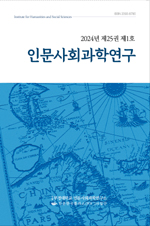- 영문명
- A Study on the Formation Factors of Consonantal Forms in Sino-Korean, Sino-Japanese, and Sino-Vietnamese : Comparative Analysis of Sino-Xenic Kanji Pronunciations through the Application of Optimality Theory (Dental Initials Series:齒上音)
- 발행기관
- 부경대학교 인문사회과학연구소
- 저자명
- 이상이(Sangyi Yi)
- 간행물 정보
- 『인문사회과학연구』제26권 제3호, 291~326쪽, 전체 36쪽
- 주제분류
- 사회과학 > 사회과학일반
- 파일형태
- 발행일자
- 2025.08.31

국문 초록
본 연구는 중세 중국어 치음계의 치상음(齒上音) 성모인 장모(莊母), 초모(初母), 상모(牀母), 산모(山母)가 일본어, 한국어, 베트남어의 한자음 체계에서 어떻게 반영되고 변형되었는지를 최적성이론(Optimality Theory, OT)의 제약 조건 분석을 통해 고찰하였다. 중세 중국어에서 장모와 초모는 각각 무성 치경구개 파찰음 [tʂ] 및 무성유기 치경구개 파찰음 [tʂʰ]로, 상모는 유성 치경구개 파찰음 [dʒ]로, 산모는 무성 치경구개 마찰음 [ʃ]로 발음되었다. 이러한 자질들은 일본어, 한국어, 베트남어로 유입되면서 각 언어의 고유한 음운 제약에 따라 상이한 형태로 변형·수용되었다.
분석 결과, 일본어에서는 장모와 초모가 주로 무성음 [s]로 단순화되어 반영되었으나, 오음과 한음의 구별을 통해 일부 청탁 대립이 유지되었다. 한국어에서는 장모가 주로 [ㅈ]과 [ㅊ]으로, 초모는 [ㅊ]으로 반영되었으며, 이는 청탁 대립보다 파찰음 자질을 유지하는 경향을 보여준다. 상모의 경우 일본어는 오음에서 [z], 한음에서 [s]로 반영하여 청탁 구별을 유지했으나, 한국어에서는 주로 [ㅅ]과 일부 [ㅈ]으로 나타나 청탁 대립이 약화되었다. 베트남어에서 상모는 대부분 [s]로 반영되며, 소수의 예외에서 [tr]이 나타났다.
산모의 반영에서도 일본어와 한국어는 [s]로 단순화하였으나, 베트남어는 대부분 [s], 극히 일부 [x]로 나타나 구개음화 경향이 제한적으로만 확인되었다. 이와 같은 결과는 기존 연구에서 베트남어의 구개음화 경향이 과대평가되었음을 시사한다.
본 연구는 각 언어의 음운 제약 조건이 중세 중국어 치상음 성모의 반영 양상에 미치는 영향을 OT 제약 평가를 통해 체계적으로 분석하였으며, 이를 통해 일본어와 한국어는 단순화와 표면 제약을, 베트남어는 제한적인 구개음화와 일부 충실성 제약을 반영하는 양상을 확인하였다. 이는 한자음 수용 과정이 단순한 원음 모방이 아니라, 각 언어의 고유한 음운 체계에 맞추어 선택·최적화되는 과정임을 보여준다. 본 연구는 동아시아 한자음 비교 연구의 심화와 중세 중국어 음운사 이해에 기여할 수 있는 자료를 제공한다.
영문 초록
This study examines how the retroflex initials of Middle Chinese—specifically, 莊母 (Zhuangmu), 初母 (Chomu), 牀母 (Changmu), and 山母 (Shanmu)—were adapted and transformed in the Sino-Japanese, Sino-Korean, and Sino-Vietnamese pronunciation systems. The analysis is conducted within the framework of Optimality Theory (OT), as formulated by Prince & Smolensky (1993), which explains how phonological outputs are selected through the interaction of ranked constraints.
In Middle Chinese, Zhuangmu and Chomu were pronounced as voiceless alveolo-palatal affricates [tʂ] and [tʂʰ], respectively; Changmu as a voiced alveolo-palatal affricate [dʒ]; and Shanmu as a voiceless alveolo-palatal fricative [ʃ]. When these sounds entered Japanese, Korean, and Vietnamese, they were reshaped according to the distinct phonological constraints of each language.
The findings reveal that in Japanese, both Zhuangmu and Chomu were generally simplified to the voiceless fricative [s], with the Go-on readings retaining some voicing contrast through [z] versus [s]. In Korean, Zhuangmu is predominantly reflected as [tɕ] or [tɕʰ], and Chomu as [tɕʰ], indicating a preference for preserving affrication over voicing contrasts. Changmu in Japanese appears as [z] in Go-on and [s] in Kan-on, maintaining voiced-voiceless distinction, while in Korean it appears mostly as [s] and occasionally [tɕ], with weakened voicing contrast. In Vietnamese, Changmu is predominantly [s], with rare instances of [tr].
For Shanmu, Japanese and Korean generally reflect it as [s], showing a tendency toward simplification. Vietnamese reflects it mostly as [s] with only one attested case of [x], indicating that palatalization is not a consistent trend as some previous studies suggested.
Through OT constraint evaluation, the study demonstrates that Japanese and Korean tend toward simplification and surface-oriented constraints, whereas Vietnamese exhibits limited palatalization and partial faithfulness constraints. This suggests that the adaptation of Middle Chinese retroflex initials in these languages was not mere imitation but a selective optimization to fit each phonological system. The research contributes to Sino-Xenic comparative phonology and enhances the historical understanding of Middle Chinese sound change in East Asia.
목차
Ⅰ. 서론
Ⅱ. 본론
Ⅲ. 결론
참고문헌
키워드
해당간행물 수록 논문
참고문헌
최근 이용한 논문
교보eBook 첫 방문을 환영 합니다!

신규가입 혜택 지급이 완료 되었습니다.
바로 사용 가능한 교보e캐시 1,000원 (유효기간 7일)
지금 바로 교보eBook의 다양한 콘텐츠를 이용해 보세요!



